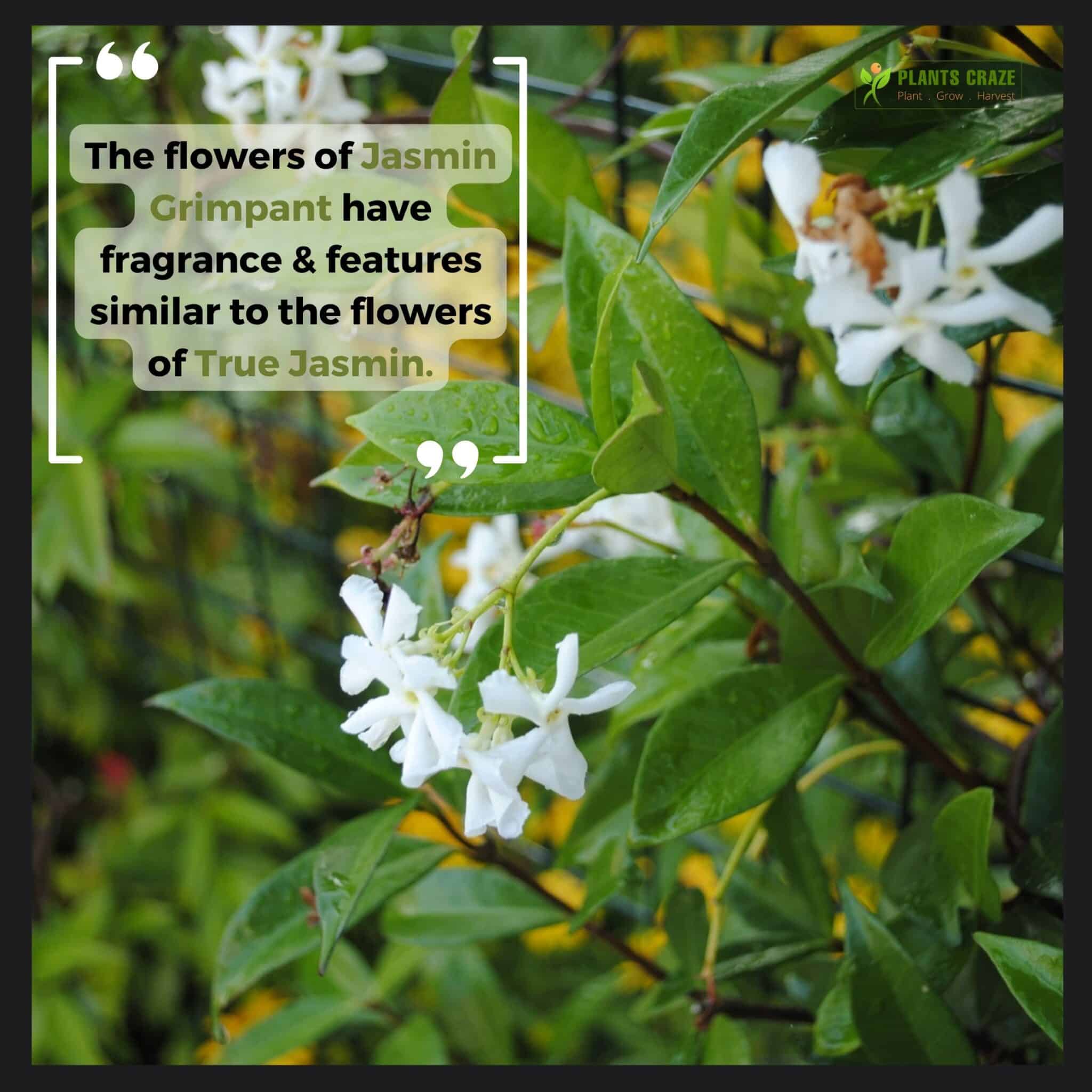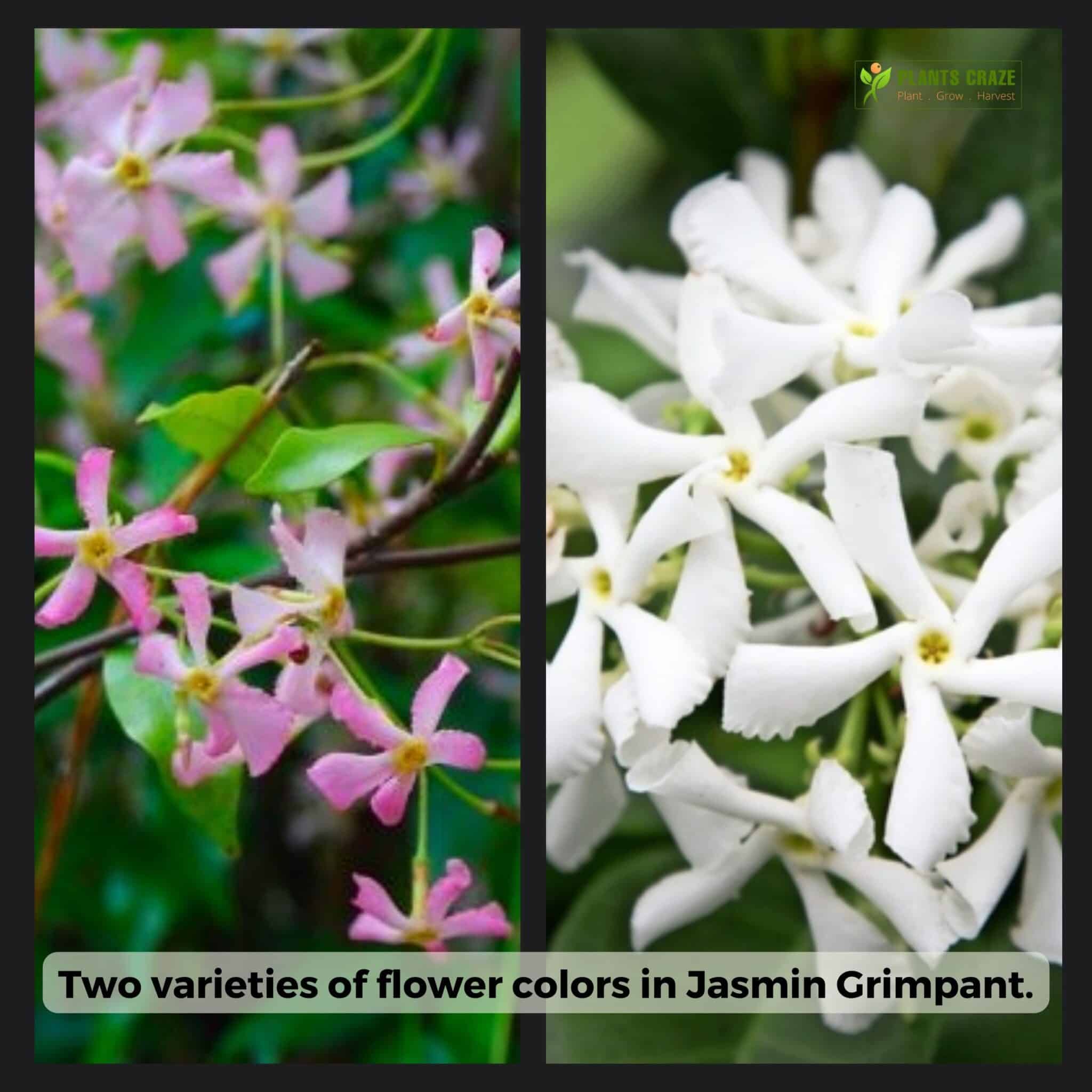With brilliant white flowers and extraordinary fragrance, Jasmin Grimpant is an easy-to-care plant.
If you want to learn about the propagation methods and toxicity of the plant, continue reading till the end!
Table of Contents Show
What Is Jasmin Grimpant? [Overview]
Jasmin Grimpant (Trachelospermum jasminoides) belongs to the plant family Apocynaceae and is commonly called ‘Star Jasmine,’ ‘Confederate Jasmine,’ or ‘Japanese Jasmine.’
This variety of Jasmine is not True Jasmine but shares a common name due to its star-shaped flowers with a noticeable floral fragrance.
As a deciduous to semi-evergreen climber, Grimpant occupies a tropical wet biome in the Eastern part of the globe.

It grows to around 10-30 meters tall in its natural habitat but serves as a hedge or trellis plant to 1-2 meters tall and 10 feet wide as a ground cover with an average growth rate.
The plant grows and blooms throughout the year in warm climates. But in colder climates, the growth rate of the plant ceases in fall and winter.
Do You Know?
Although Jasmin Grimpant is not a beneficial True Jasmine, it still has many medicinal properties.
It is a crucial plant in Traditional Chinese Medicine (TCM) practices.
Additionally, Jasmin Grimplant has elliptical dark green to light green leaves and terminal cymose inflorescence with 5-petaled pin-wheel-like white flowers.
Jasmin Grimpant Care [Growing Conditions]
If you happen to own a Jasmin Grimpant, you may be familiar with its rigorous caretake.
Since it is a tropical variety, it thrives in warm and humid climates.
Let’s look at the growing conditions of Jasmin Grimpant below.
- Light: 6-8 hours of daily direct sunlight (tolerates partial shade).
- Temperature: 65-85°F (prevent temperature drops below 50°F).
- Watering: Weekly (spring & summer) and Every 1-2 weeks (fall & winter).
- Humidity: 50-70% ambient moisture.
- Soil: Organically rich, well-draining soil (pH: 6-6.5).
- Fertilizer: Balanced 10-10-10 feed monthly (spring & summer) and cut back during fall & winter.
- Pruning: Remove any brown, decaying, damaged, pest and disease-infested parts and apply neem oil.
- Repotting: Repot every 2-3 years in a 1-2 inches wider terracotta pot during spring.

Jasmin Grimpant Propagation
The best way to propagate the plant is by using semi-hardwood cuttings from late spring to summer.
- Cut 3-6 inches long semi-hardwood cutting from a healthy plant with at least a node and no flowers.
- Remove the lower leaves to expose 3-4 nodes, and dip the cutting in the rooting hormone powder.
- Fill a terracotta planter with a well-draining potting mix (compost soil, organic perlite, and peat moss).
- Ensure to plant the cuttings separately in individual planters and place the setup with the above-mentioned growth requirements.
- Once roots become 2-3 cm in 4-6 weeks, transplant them to a larger planter or in the garden.

Toxicity of Jasmin Grimpant
Jasmin Grimpant is non-toxic to pets and humans.
However, as a member of the Dogbane family (Apocynaceae), the plant produces milky sap, which can irritate the eyes and skin.
Nevertheless, you can safely leave your pets and children around the plant, but ensure to keep a watchful eye on them.
Hence, Grimpant is more like a medicinal plant rather than a harmful threat.
However, always use gloves and pruning gears while trimming or repotting the plant to avoid the toxic sap.
If you suspect any health issues in your pets or children after ingesting the plant parts, contact the following helpline numbers.
From Editorial Team
Conclusion!
Grimpant may be a magnificent imposter, but it begets adorable starry flowers with a sweet Jasmine-like fragrance.
However, the blooms are frequent if you grow them as winter-hardy evergreen perennials in the USDA zones 7-10.


